NUTRACEUTICALS

Whynutraceutical products should prefer hard capsules





JULY2023,` 40

























Whynutraceutical products should prefer hard capsules





JULY2023,` 40


























100%SprayDriedwithExcellentFlowand CompressibilityforWet/DirectGranulationFormulations

DiscovertheDifference:
Over10yearsofSMCCmanufacturingexpertise. Trustedsupplierwithregularsuppliestomajorformulators.
State-of-the-artfacilitywith WHOGMP, ISO9000, CEPEDQM, and DMF accreditation.
TheRanQassuranceofhighqualitybackedbycredibilityandreputation. Consistentandreliablesuppliesforuninterruptedproduction.
RigoroustestingensuresthesafetyandreliabilityofRanExplo-ASMCC.
Tailoringsolutionsforyouruniqueneeds.






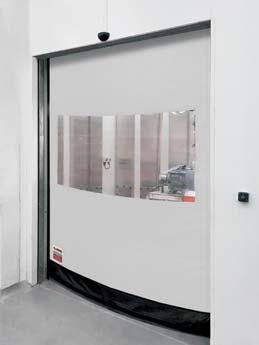









Chairman of the Board
ViveckGoenka
Sr.Vice President-BPD
Neil Viegas
Vice President-BPD
Harit Mohanty
Editor
Viveka Roychowdhury*

Editorial Team
Lakshmipriya Nair
Kalyani Sharma
DESIGN
Art Director
Pravin Temble
Senior Designer



Rekha Bisht
Senior Artist
Rakesh Sharma
Marketing Team

Rajesh Bhatkal
Ashish Rampure
Debnarayan Dutta

Production Co-ordinator
DhananjayNidre
Scheduling & Coordination
Pushkar Waralikar CIRCULATION
Mohan Varadkar
15 FDD CONCLAVE 2023: MAKING INDIAAN EPICENTRE FOR FR&D
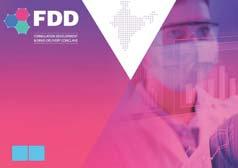

16 IPASUCCESSFULLY HOSTS EIGHT EDITION OF GLOBAL PHARMACEUTICAL QUALITYSUMMIT IN MUMBAI

17 TRANSGENDER INCLUSION IN HEALTHCARE: BREAKING BARRIERS AND CREATING EQUITABLE CLINICALTRIALS
MICHAELBRAIG CEO, Finzelberg GmbH
25 WHY NUTRACEUTICAL PRODUCTS SHOULD PREFER HARD CAPSULES

The theme for the Indian Pharmaceutical Alliance's flagship event, the Global Pharmaceutical Quality Summit, was Patient Centricity and the Future of Manufacturing and Quality. A pertinent choice, given the reverberations from children’s deaths across at least seven countries, which have been linked to Made-in-India cough syrups and other formulations. The comments of global regulators at the IPA Summit are additionally significant when viewed against this tragic backdrop.
Big India pharma finds itself on the back foot, thanks to such recurring incidences. Speaking during the inaugural session, Nilesh Gupta - Chair, Quality Forum, IPA and MD, Lupin asserted that “the priority is to deliver a quality product, consistently.” His comment that “capability building within the India pharma sector is key to play its role in the transformation of India into a developed nation” reflects the stark reality of the wide variation in quality standards of medicines within the country.
S Aparna, Secretary, Department of Pharmaceuticals, Government of India, in her keynote address during the inaugural session, referred to another widely accepted variation: India’s vast geography and federal structure translates into multiple levels of drug regulation, with varying degrees of capabilities, requiring continuous capacity building measures within the regulatory body itself.
But her hopes that the IPA Summit would motivate more MSMEs to seek the schemes launched by the government to help them upgrade their quality systems needs to be emphasised beyond IPA’s membership of the 20-odd big Indian pharma companies.

Fortunately, IPA Secretary General Sudarshan Jain revealed that IPA's quality workshops have now been opened to non-member companies as well. That’s certainly a good move. The cases highlighted in Gambia and then across more countries, prove that medicine quality can no longer be treated as a competitive advantage, with best practices being marked ‘For Members-Only”.
The Secretary, DoP’s message was reiterated by Rubina Bose, Deputy Drugs Controller India, CDSCO during a panel discussion with representatives of three global regulators: Sarah McMullen, Country Director, India Office, Office of Global Operations, USFDA; James Pound, Deputy Director Standards and Compliance, MHRA and Thomas Hecker, Inspector, Certification of Substances Department, EDQM.
Despite the negative connotations of import alerts and post-inspection observations, the global regulators on the dais seemed to call for a more holistic view of inspections. For instance, McMullen said that the “US FDA does not expect perfection”, reasoning that while problems do occur, what counts is how companies handle these identified issues. This was echoed by the EDQM’s Decker who said it was more important to understand how a company responds to issues flagged during inspections.
When moderator Shirish Belapure, Senior Technical Advisor, IPA joked that pharma heads in India were cancelling vacation time, thanks to the multiple inspections being conducted at pharma plants, Decker wondered why that was so. His reasoning that once good (quality management) systems were in place, teams would manage inspections even in their seniors' absence triggered a wave of uneasy chuckles from the audience. The reaction exposed a crucial fault line: just how much do written SOPs reflect actual practice?
Regulators are plugging loopholes and tightening laws to safeguard patients. For instance, the US FDA issued a guidance in May 2023, alerting pharma manufacturers, to the potential public health hazard of glycerin and other high-risk drug components contaminated with diethylene glycol (DEG) or ethylene glycol (EG).
It is well known that both contaminants enter the pharma supply chain, either due to negligence or willful mixing of pharma-grade glycerine with its industry-grade equivalent. Scant or faulty analytical methods do not catch the contamination. The contamination or mixing of both grades of solvents is most likely deliberate, as there is a vast price difference between the two grades. It is difficult to trace back such ‘contaminated’ solvents to rogue traders, as there are multiple selling points and smaller pharma companies do not document all such purchases.
Over the past few months, India’s drug regulator CDSCO has also upped its game. Reports suggest that 209 pharma manufacturing sites, known for previous GMP violations, have been jointly inspected by both central and state drug inspectors. 71 companies have been reportedly issued show-cause notices, and 18 companies have been asked to shut down.
In addition, in May, CDSCO mandated that all cough syrups due for exports would need to be checked at Central/ State Drug Testing Laboratories. This has however created a backlog of cough syrup samples at certain labs. On June 13, CDSCO announced that it would update the number of batches of cough syrups it receives at each of its labs so that companies send their samples to labs with fewer samples.
However, these steps do not seem to be enough. Putting a question mark on the test reports from government-controlled labs, Gambia’s Medicines Control Agency mandated that from July 1, all medicines exported from India to Gambia would first need to be tested at a designated private lab in Mumbai. The detailed preshipment document verification, physical inspection, quality control testing and issuance of Clean Report of Inspection and Analysis for pharma products now mandated by Gambia will probably delay exports and add to the costs. Will other countries follow suit and risk medicine shortages?
VIVEKA ROYCHOWDHURY, Editor viveka.r@expressindia.com viveka.roy3@gmail.comGlobal regulators question perfection,look for the right approach to quality and to understand how a company responds to issues flagged during inspections



Organised by Express Pharma, Pharma Formulation and Drug Delivery (FDD) Conclave 2023 will be held this year on July 2122, 2023 at Park Hyatt, Hyderabad It is 'the' platform for leaders, experts and veterans of FR&D to come together conferand converse, on the current and future trends in the industry, their growth drivers and the challenges to tackle them as well as form meaningful alliances to fast-track progress.
FDD Conclave 2023 will bring the FR&D community together to discuss how India Pharma Inc needs to leverage its existing strengths and build new capabilities to develop of innovative and differentiated pharma products, complex drugs or biologics and biosimilars across a range of indications for its next phase of growth.
FR&D leaders will highlight evidence-based strategies and approaches to develop novel formulations and drug delivery systems which will help create intellectual property, enhance life-cycle management, and amplify cost and market differentiation. The leaders will also examine the impact of recent government initiatives, regulations and policies to help promote innovation in pharma R&D and help India secure and sustain a key position in the global pharma R&D landscape.
Topics to be discussed
◆ Incentivising pharma FR&D in India
◆ Fuelling innovation in biopharma FR&D
◆ Building India's FR&D talent pool: Approaches & techniques
◆ Developing cost-effective drug formulations and delivery systems: Opportunities & challenges

◆ FR&D for continuous manufacturing
◆ Predictive approaches for solid formulation
◆ Potential of emerging vaccine technologies
◆ Developments in injectable drug delivery
◆ Impact of additional budgetary allocation for R&D
◆ Role of emerging technologies in drug development
epicentre
FDD Conclave 2023 will discuss how India Pharma Inc needs to leverage its existing strengths and build new capabilities to develop of innovative and differentiated pharma products,complex drugs or biologics and biosimilars across a range of indications for its next phase of growth

The Indian Pharmaceutical Alliance (IPA) recently concluded the 8th edition of the Global Pharmaceutical Quality Summit. Dr Mansukh Mandaviya, Minister for Chemicals & Fertilizers and Health & Family Welfare, Government of India, delivered his address during the closing ceremony. The theme for the Summit was, ‘Patient Centricity: New Paradigm of Manufacturing and Quality’. The two-day summit brought together industry leaders, global regulators, quality experts, and stakeholders to foster knowledge exchange and deliberate on areas of importance in shaping the pharma landscape in India.
The event was inaugurated by Nilesh Gupta - Chair, Quality Forum, Indian Pharmaceutical Alliance and MD, Lupin. S Aparna,
Mandaviya said, “Quality, R&D and innovation are the need of the hour. India was in mission mode during COVID-19, and we played a sterling role as the pharmacy of the world, by ensuring an uninterrupted supply of quality medicines and vaccines to the world. In a global crisis, India displayed maturity, responsibility, and leadership. I am happy that collaboration among the Government and stakeholders enhanced India's global reputation further. I am also deeply appreciative of our pharma industry leaders who placed duty above profit and worked with the Government to fulfil domestic and global demand to manufacture four novels COVID vaccines. It is now time for change. Today, the world wants India to manufacture medicines and vaccines and we must leverage this unique opportunity by using our
Secretary, Department of Pharmaceuticals, GoI, delivered the keynote address during the inaugural session. The first day highlighted the importance of the future of manufacturing and building quality as a culture in the pharma industry. Regulators from around the world - US FDA, MHRA, EDQM and CDSCO discussed the regulatory affairs highlighting recent inspection observations and trends. The day concluded with discussions on technology architecture, exploring best-in-class engineering controls to ensure excellence in pharma production.
Day two of the summit witnessed industry leaders shedding light on industry advancements, continuous manufacturing, regulatory expectation, digital technologies in pharmaceutical manufacturing and learnings from other industries. The highlight of the day was the panel discussion comprising leading CEOs of the pharma industry from Cipla, Dr Reddy’s, Lupin, Sun Pharma and Zydus providing their thoughts on the future of the Indian pharma industry.
brand power and manpower. Quality is a top priority today and central and state regulators are working closely to ensure this. Let us collaborate and create new models to foster innovation and strengthen industry-academia linkages. I am hopeful that the Global Pharmaceutical Quality Summit 2023 deliberations over the last two days lead to new pathways to address challenges and a consultative approach is the way forward.”
Sudarshan Jain, Secretary General, IPA, said, “The Indian pharma industry plays a critical role in shaping the health outcomes of patients globally. India is known for providing quality-assured affordable medicines worldwide. During the COVID-19 pandemic, the industry demonstrated resilience and is now known as the pharmacy of the world. Quality is the fundamental tenet of the pharma sector. Continuous investments in quality –systems, technology, and talent – is fundamental as the overall healthcare landscape is evolving at an unprecedented pace. IPA is committed to making India a global benchmark in quality.”
Schott Glass India: Glass is a naturally occurring material that consists to around 70 - 80 weight% of natural sand (SiO2). As this pure sand (quartz, silica) is too hard and too expensive to melt and be formed into containers, substances that soften the glass and make it easier to convert are added. These substances can be Sodium (Na), Potassium (K), Barium (Ba), Magnesium (Mg) and / or Calcium (Ca).
In order to stabilize the glass structure Boron (B) and Aluminum (Al) are added to the composition. So far in general, nearly all glasses used for pharmaceutical applications contain at least Si, B, Al, Na and Ca. The remaining elements are individual to the glass supplier. The special fact about glass is that it possesses an amorphous structure which means that the atoms in the glass network are not arranged in a perfectly symmetrical way but more chaotic. This leads to some unique properties like e.g. a high transparency.
Schott Glass India : The chemical resistance describes the resistance against chemical attack by defined agents. As glass does not react with organic solutions this can thus be neglected. The reaction of glass with an aqueous and acidic solution is basically the same. A Hydrogen ion from the solution is able to exchange with a Sodium ion from the glass. So in the end there is an accumulation of Sodium in the solution which can be measured by titration or flame spectroscopy. This reaction is provoked in the test for hydrolytic resistance according to USP and Ph. Eur. The lower the accumulation of Sodium in the solution the better is the quality of the glass. Glasses with a very high hydrolytic resistance - which means low accumulaton of Sodium in the solultion - are borosilicate glasses and classified as Type I. The reaction with alkaline solutions is completely different. Here, Hydroxide ions directly attack the Silicon in the glass structure and erode the surface. This happens more intense at higher pH values, around pH 10 and higher.
For more information contact: santosh.jadhav@schott.com
two-day summit brought together industry leaders,global regulators,quality experts,and stakeholders to foster knowledge exchange

Diversity, equity and inclusion (DE&I) are fundamental principles that drive positive change and progress in various aspects of society. These principles recognise and celebrate the unique characteristics and experiences of individuals, ensuring fair representation, equal access, and opportunities for all.
In the context of clinical research, diversity refers to the inclusion of individuals from various demographic backgrounds, including race, ethnicity, gender, age, socioeconomic status, and more.
Inclusivity entails creating an environment that respects and embraces differences, fostering a sense of belonging and ensuring that all individuals have a voice and are heard. Equity goes beyond equality by addressing systemic barriers and providing fair and just opportunities, resources, and outcomes to individuals regardless of their backgrounds. By embracing diversity, equity and inclusivity, we promote a more comprehensive and accurate understanding of health and disease, improve healthcare outcomes, and advance towards a more equitable and just society for all.
The US has 16 lakh transgender people and in the UK, around 2.62 lakhs.1 There are 4.8 lakh transgender people in India, according to the 2011 census, but campaigners believe the true number may be closer to 15 lakhs. The National Portal for Transgender Persons, established in 2020 by the Department of Social Justice & Empowerment, has provided much-needed relief to the
transgender community to receive the necessary acknowledgement in India.1, 2
Diversity, equity and inclusion in clinical trials are not just desirable but essential for several reasons. Firstly, every individual, regardless of their gender identity, deserves equal access to healthcare and the opportunity to participate in research that directly impacts their well-being. By including diverse populations in clinical trials, we can ensure that the benefits of medical advancements apply to everyone, including transgender individuals.
Secondly, excluding transgender individuals from clinical trials hinders our understanding of their specific healthcare needs. Transgender individuals often face unique health challenges related to hormone
therapy, surgical interventions, mental health, and more. Without their representation in research studies, we miss valuable insights into effective treatments and interventions tailored to their needs. Comprehensive data from diverse populations is crucial for evidence-based medical practice and the development of inclusive healthcare policies.
Thirdly, promoting diversity, equity and inclusion in clinical research is a matter of social justice and human rights. Transgender individuals have historically been marginalised and faced discrimination within the healthcare system. By actively addressing the underrepresentation of transgender individuals in clinical trials, we can challenge and overcome systemic biases, promoting a more just and equitable society.
To achieve diversity and inclusivity in clinical trials, it is essential to raise awareness and advocate for increased education among healthcare professionals. By enhancing their understanding of the healthcare needs of transgender individuals, we empower healthcare providers to deliver more competent and sensitive care. This can be achieved through incorporating transgender-specific healthcare education into medical school curricula, offering ongoing training opportunities, and fostering a culture of respect and inclusivity within healthcare organisations.
However, several roadblocks hinder the participation of transgender people in clinical trials. One significant challenge is the burden placed on transgender individuals due to numerous medical appointments. Hormone therapy, surgeries, and regular monitoring of health create a time-consuming and costly commitment, making it difficult for them to participate in lengthy clinical trials that require frequent visits. Addressing this challenge requires innovative trial designs, such as remote monitoring or flexible scheduling options, to minimise the burden on participants.
Parexel's report on gender identity report, Beyond the Binary: Navigating Gender Diversity in Clinical Research, provides valuable insights into creating more equitable clinical trials for transgender and nonbinary patients. The report identifies five roadblocks to participation: lack of awareness and understanding, logistical challenges, mistrust and safety concerns, limited recruitment
strategies, and limited data collection and reporting. It also offers eight solutions, including raising awareness and education, streamlining logistics, building trust and ensuring safety, implementing diverse recruitment strategies, and improving data collection and reporting.
As the world recognises the urgency to foster inclusivity and promote equitable clinical trials, we must work collaboratively with healthcare providers, researchers, advocacy groups, and the transgender community to implement these solutions. By addressing roadblocks and striving for inclusivity, we can create clinical trials that reflect the diversity of our population, generate more robust evidence, and ultimately improve healthcare outcomes for all individuals, including transgender and nonbinary patients.
References
1. https://www.parexel.com/insights/discussions-diversity/gender-identity-in-clinical-trials
2. They thought I was a curse’: The struggles of India’s trans community. Accessed from: https://www.opendemocracy.net /en/5050/india-transgender-discrimination-health-gender-affirmation-surgery/
3. The Transgender And Unemployment In India. Accessed from: https://www.outlookindia.com/national/transgenderand-unemployment-in-indianews-182617
4. Overcoming obstacles in trans and nonbinary participation in clinical trials. Accessed from: https://www.clinicaltrialsarena.com/news/transgenderclinical-trials/
Lead,Parexel accentuates that diversity,equity and inclusion in clinical trials are essential to ensure that the benefits of medical advancements apply to everyone,including transgender individuals
As India's pharma sector undergoes a transformative shift,an agile and scalable cold chain characterised by innovative approaches, intelligent infrastructure,and collaborative practices will be key to progress



 By Lakshmipriya Nair
By Lakshmipriya Nair

The growing emphasis on a resilient supply chain in pharma and life sciences has brought the temperature-controlled supply chain, known as the cold chain, into the spotlight. The COVID-19 pandemic also highlighted the vital role of the cold chain in ensuring patient safety during vaccine distribution.
And, with India’s vaccine, biopharma, and clinical trials market projected to grow in double-digits, there will be an increasing demand for efficient cold chain facilities.
As per Research and Markets, Indian cold chain market size reached Rs 1,814.9 billion in 2022. The market is expected to reach Rs 3,798.7 billion by 2028, exhibiting a CAGR of 13.1 per cent during 2022-2028.
So, in this article, we delve into this dynamic market to explore the driving factors behind its exponential growth and the trends shaping the market landscape while evaluating the pain points that need to be addressed for sustained growth.
◆ Gaps in supply infrastructure: The healthcare sector's escalating demand for dependable cold chain facilities to safeguard temperature-sensitive products such as vaccines, biopharmaceuticals, and clinical trial materials is fuelling the cold chain industry’s expansion.
As a report from Accenture titled, ‘The New Ice Age: Creating a flexible, intelligent pharma cold chain’ highlights the global scenario, “The total market value of pharma products is expected to be $1.7 trillion by 2024, with 30 per cent representing the cold chain portfolio. This means cold chain capabilities would need to grow in parallel with therapeutic inn ovations to satisfy patient demand.”
However, significant gaps exist in India’s pharma cold chain infrastructure, particularly in transportation, storage, and power supply. Inadequate road, rail and air networks,
The future of cold chain pharma packaging in India is being shaped by several technological advancements and innovations.Companies are developing customised solutions that account for the unique temperature requirements,sensitivity,and fragility of different drugs
Kami Viswanathan
The newly proposed storage and warehousing policies will guide the ongoing efforts of pharma and logistics companies in addressing such issues by increasing the accessibility of the cold chain infrastructure and enhancing the connectivity to the storage areas through multimodal connectivity
Dinesh Tarachandani
The Indian cold chain pharma logistics market presents a wealth of opportunities for companies that are willing to take a strategic and proactive approach.By expanding your presence, offering specialised services,investing in infrastructure development,adopting new technologies,and engaging with government agencies,you can capitalise on these opportunities
Jesal Doshi Deputy CEO of B Medical Systems

sub-optimal storage conditions, outdated technology etc. impede efficient logistics of pharma products. At the same time, the Indian cold chain market is also highly fragmented with over 3,500 companies. Organised players make up only 8 to 10 percent of the cold chain industry market.
Recognising the importance of tackling cold chain challenges, investments in cold chain infrastructure is likely to increase. Logistics companies are already expanding their capacity for temperaturecontrolled storage and transportation to meet the growing demand.
over 90 cold chain facilities worldwide. They offer tailored solutions for transport of temperature-controlled healthcare shipments within India to over 6,000 postal codes.
◆ Packaging innovations: The transportation and storage of various temperature-sensitive pharma, biologics, and clinical trial materials continue to require advanced packaging solutions. They play a vital role in ensuring the integrity and stability of temperature-sensitive pharma products throughout the cold chain. This has presented an ongoing market opportunity for packaging providers to develop and deliver cutting-edge packaging solutions that ensure product integrity, regulatory compliance, and patient safety.
Thus, packaging innovations ranging from ultra-cold shipping containers with advanced insulation to temperature-monitoring devices and data loggers that enable realtime tracking and monitoring of vaccine shipments have witnessed a rise in the pharma cold chain sector to prevent and mitigate temperature excursions and serve the needs of the life sciences and healthcare industry.
Kami Viswanathan, Senior VP of FedEx Express Middle East, Indian Subcontinent and Africa (MEISA) Operations confirms, “The emerging trends in pharma cold chain packaging are driven by increasing adoption of temperature monitoring and data logging to track temperature variations, provide real time visibility, and traceability, such as the FedEx SenseAware device which integrates IoT technology for near real-time monitoring, ensuring visibility and product integrity.”
To cite a few examples:
◆ IndoSpace and Koolex have collaborated to design and set up three warehouses in proximity to Mumbai, Delhi and Bangalore. Each will have 36,000 pallet positions.
◆ FedEx has invested in healthcare supply chain and cold chain capabilities with
She adds, “Companies are developing customised solutions that account for the unique temperature requirements, sensitivity, and fragility of different drugs. For example, reusable FedEx Vacuum Insulated Packaging, frozen gel packs, and PCM cooling technology helps ensures
optimal protection, reducing the risk of temperature deviations in a sustainable fashion.”




Future Market Insights predicts a robust growth rate of 14.8 per cent from 2023 to 2033, compared to 13.3 per cent from 2016 to 2022 for the pharma cold chain packaging segment in India.

◆ Technology advancements: Technologies like big data, predictive analysis, and AI are ushering significant benefits to the pharma sector's cold supply chain. Real-time temperature-monitoring and control in smart storage warehouses, facilitated by AI, robotics and IoT, are facilitating accurate and consistent temperaturecontrolled environments, reducing the risk of product spoilage. Digital adoption is streamlining operations, reducing paperwork, and improving transparency. Drones and selfdriving vehicles are enabling last-mile deliveries to remote areas while maintaining optimal temperature control. IoTenabled vehicles make realtime tracking and monitoring of both the vehicle and its contents possible, ensuring the integrity of medical supplies.


Vishwanathan reiterates, “The future of cold chain pharma packaging in India is being shaped by several technological advancements and innovations. Companies like FedEx Express are integrating cutting edge technological solutions such as Blockchain, Automation, and IoT to revolutionise the field. We are using advanced analytics and realtime data to transform collection and delivery predictions, optimising routes for efficient transportation. Machine learning and analytics identify opportunities for delivery efficiency, ensuring product integrity within the cold chain. Proprietary tracking systems like FedEx SenseAware enable near real-time monitoring, giving customers visibility and control.”
Dinesh Tarachandani, Head – Global Logistics, DP World Subcontinent, in an earlier article shared with Express
Pharma, informs, “With pharma industry accelerating its digital transformation journey, the supply chain services providers have also increased their focus on driving



innovations backed by data to strengthen the pharma and medical logistics. For instance, DP World’s production management and business intelligence tools provide en-
hanced visibility and control across the supply chain, thereby supporting optimum decision making. Furthermore, company’s suite of digital technologies is helping our cus-
tomers identify bottlenecks in their supply chains and smooth the flow of medical supplies across borders.”
Thus, from optimised route planning to real-time

temperature monitoring, streamlined operations, and advanced last-mile delivery solutions, emerging technologies are enhancing efficiency, reducing costs, and improving product integrity.
◆ Conducive policies: Favourable government policies are also driving growth in the industry.
“The supply chain in postCOVID times is being shaped, in part, by government policies. In September 2022, the Central Government announced the National Logistics Policy with the objective of lowering the cost of logistics, increasing the competitiveness of Indian products in domestic and international markets, and improving the efficiency of industries. India’s pharma MSMEs will benefit from the reduction in logistics costs. The establishment of multi-modal logistics parks, as proposed in the policy, will improve last-mile connectivity, and strengthen the cold storage and warehousing infrastructure across the country,” states Tarachandani.
He adds, “In the pharma supply chain, products are usually sent to C&F agents, then to city-level distributors, and ultimately to retailers. Since much of this happens at a local level, it can cause compliance issues, especially when it concerns medicines that need to be transported and stored at specific temperatures. This is because, in India, temperatures can vary widely across states, and even within cities in the same state. The newly proposed storage and warehousing policies will guide the ongoing efforts of pharma and logistics companies in addressing such issues by increasing the accessibility of the cold chain infrastructure and enhancing the connectivity to the storage areas through multimodal connectivity.”
Jesal Doshi, Deputy CEO of B Medical Systems, says, “Government initiatives such as the Scheme for Cold Chain & Value Addition Infrastructure, Pradhan Mantri Kisan Sampada Yojana (PMKSY) and Backward & Forward Linkages are
❒ Express Pharma accepts editorial material for regular columns and from pre-approved contributors / columnists.
❒ Express Pharma has a strict non-tolerance policy of plagiarism and will blacklist all authors found to have used/refered to previously published material in any form, without giving due credit in the industryaccepted format.All authors have to declare that the article/column is an original piece of work and if not,they will bear the onus of taking permission for re-publishing in Express Pharma.
❒ Express Pharma's prime audience is senior management and pharma professionals in the industry.Editorial material addressing this audience would be given preference.
❒ The articles should cover technology and policy trends and business related discussions.
❒ Articles for columns should talk about concepts or trends without being too company or product specific.
❒ Article length for regular columns: Between 1200 - 1500 words.These should be accompanied by diagrams,illustrations,tables and photographs,wherever relevant.
❒ We welcome information on new products and services introduced by your organisation for our various sections: Pharma Ally (News,
encouraging investment in the cold chain sector and driving technological innovation. These initiatives aim to improve infrastructure, promote the adoption of new technologies, and support the growth of the cold chain pharma logistics market in India.”
◆ Strategic partnerships: “As the costs and complexities of healthcare and pharma logistics continue to rise, pharma companies need logistics partners who can mitigate any adverse impacts on their business and on patients. The ability to leverage relationships, network, experience and skills is crucial to ensure that access to quality healthcare remains equitable across the globe. Partnering with logistics providers can yield significant benefits for pharma companies on both the business and the consumer health fronts,” points out Tarachandani.
Companies offering cold chain solutions and services to the pharma sector must proactively prepare for the future. In this milieu, the importance of
cooperation and collaboration among systems and organisations for the transportation of temperature-controlled pharma products become very crucial. Existing capabilities may not be inadequate to meet future requirements and satisfy expectations of the life sciences companies in terms of visibility, quality assurance, flexibility, and efficient execution.
Players who can offer services in security, traceability and other related services throughout the supply chain with the help of the right skills, infrastructure and technology will gain a competitive edge and become preferred partners for the pharma and healthcare industry.
Abundant opportunities await players seeking to tap into the increasing demand for cold chain pharma logistics services in India. But, how can the players optimise the growth potential?
Doshi advises, “The Indian
Products,Value Add),Pharma Packaging and Pharma Technology Review sections.Related photographs and brochures must accompany the information.
❒ Besides the regular columns,each issue will have a special focus on a specific topic of relevance to the Indian market.
❒ In e-mail communications,avoid large document attachments (above 1MB) as far as possible.
❒ Articles may be edited for brevity,style,and relevance.
❒ Do specify name,designation,company name,department and e-mail address for feedback,in the article.

❒ We encourage authors to send their photograph.Preferably in colour,postcard size and with a good contrast.
cold chain pharma logistics market presents a wealth of opportunities for companies that are willing to take a strategic and proactive approach. By expanding your presence, offering specialised services, investing in infrastructure development, adopting new technologies, and engaging with government agencies, you can capitalise on these opportunities and position your company for long-term success.”
Building an intelligent and patient-centric cold chain is an imperative for life sciences companies and their logistics partners. And, this calls for a proactive mindset, the right strategy, pivotal partnerships and significant investments. All stakeholders in the pharma cold chain need to consider broader implications for their present and future needs, and adopt an approach that encompass product quality assurance, regulatory compliance, data monitoring, and sustainability.
lakshmipriya.nair@expressindia.com laxmipriyanair@gmail.com
Email your contribution to: The Editor, Express Pharma, Business Publications Division,The Indian Express (P) Ltd, Mafatlal Centre,7th floor,Ramnath Goenka Marg, Nariman Point,Mumbai 400021 viveka.r@expressindia.com viveka.roy3@gmail.com

In the days to come, what will be the major drivers and restraining factors that will
has seen a significant increase driven by a change of consumers’ behaviour
and wellness. In this context, consumers are actively looking for more botanical and
related health concerns, and it will define the life science market in the years to come.
support their position in the marketplace. Currently the biggest restraints are linked to


WorkingTemperature:-25°Cto+95°C
CoolingCapacity:0.2kWto20kW
HeatingCapacity:1.3kWto18kW






PumpCapacityowrate:2.9to140LPM
Pressure:0.3to6bar
Applications: RotaryEvaporators,bioreactors fermenters,distillationsystems
+919900674407|info@srico-labworld.com|www.srico-labworld.com

ingredient production by 2025. Furthermore, Finzelberg and its sister company MartinBauer have built-up trustworthy partnerships over many years and vertical backwardintegration programs with growers, farmers and distributors of raw materials all over the globe, which enables us to ensure a stable raw material supply as well as traceability back to the fields.
What is the value proposition that Finzelberg presents to its prospective customers? What is the USP of the company over its competitors?
Finzelberg has been extracting the efficacy from botanicals and making it available since the year 1875. This is our core competency. Together with our customers in the pharma and dietary supplement industries, we develop, optimise and offer safe and efficacious botanical ingredient solutions to protect and promote health the natural way. Finzelberg stands for highest quality botanical ingredient solutions made in Germany as well as sustainable supply chains.
Can you give us an overview of Finzelberg's key offerings for the life sciences market, in India and globally?
Finzelberg offers a broad portfolio of premium botanical extracts for herbal medicinal products and dietary supplements - from classic extracts for tablets and capsules to a spectrum of modern dosage forms. Made to Pharma GMP standards, our customers come to Finzelberg for our proven quality and audit safety, bolstered by independent certifications. At Finzelberg, we uphold the highest standards, from procurement to final extract - from product development throughout the entire value chain. To start, we ensure consistently safe supply of raw materials by maintaining close, longstanding relationships with our suppliers in their country of origin. Our responsibility to
our customers, and their customers, is paramount. We are a proud member of the nature network®, which promotes responsible sourcing, certified methods, and innovative product creation. Finzelberg offers a broad range of botanical solutions for areas ranging from cough and cold, cognition, joints, sports and active nutrition to gut health, sleep, and women's as well as men's health.
What is the targeted revenue growth of your company over the next few years and the broad strategy to achieve this?
Finzelberg is pursuing a very ambitious double-digit growth strategy over the next few years driven by organic as well as external growth. Our existing branded ingredients, new areas and categories where we are currently not playing in, such as ayurvedic medicine, as well as a forward

strategy along the value chain to offer not only ingredients but finished product concepts and solutions will get us there.
What are the company's major milestones in the past decade? Any key acquisitions/partnerships/s trategies that have helped the company to fortify its growth plans?
Challenging times call for a clear focus. We have achieved major milestones over the last 10 years with the implementation of significant investments in production facilities, infrastructure, and sustainability programs. The last investment was executed during the time of the global pandemic. By finalizing a new extraction facility, we have achieved another major milestone for our strategic investment program.
This demonstrates our long-term commitment to strategically supporting our customers and their position in the growing market for botanical ingredients. Our highly innovative, cuttingedge extraction facilities are incorporating highest technical and regulatory standards in order to deliver highest quality to our customers and to meet global regulatory requirements. It is also another key step in driving our ability to reach our ambitious climate targets. With the acquisition of red otc development GmbH, we have also made a big step towards offering innovative final product solutions, especially in the area of OTC medicines with ready-to-launch EU-CTD format dossiers.We thank our shareholders for their strong support and trust during the pandemic to enable us delivering our strong investment plans.
What are the key strategies you have adopted for progress in the past five years? Give us an overview of your approaches for India and international markets. As global supplier of active botanical extracts for
pharma and dietary supplements, we take responsibility in contributing to a climate neutral world. To achieve this, we set ourselves ambitious climate protection goals to fulfill our long-term sustainability strategy. As part of a family business, we have always embraced our corporate responsibility and made sustainability an integral part of our business strategies. At Finzelberg, we are keenly aware that a responsible, respectful environmental approach is critical, not only for the future of our company, but our planet, and future generations. We participate in local and global causes that closely mirror the UN Sustainable Development Goals. Finzelberg was founded in the year 1875 and will celebrate its 150th anniversary in 2025, therefore we have set ourselves the very ambitious goal to become carbon neutral along our entire production process at that time, meaning that we would be one of the first players in the industry to achieve this target. Indian Ayurvedic System and Medicines are well known and well accepted across the world. We believe India as our major partner in exploring local botanical extracts and their synergistic combination with Western origin botanical extracts. We are committed to offer Finzelberg’s globally proven botanical extracts to India.
What kind of acquisitions/collaborations would interest the company in the near future?
Clearly interesting for Finzelberg will be acquisitions and collaborations into local extraction capacities, e.g., in India, as well as entering areas and categories of plant-based medicines where we do currently not play in such as ayurvedic medicine, Jamu, TCM and others preferably with a portfolio of branded, scientifically backed, and IPprotected ingredients.
We believe India is our major partner in exploring local botanical extracts and their synergistic combination with Western origin botanical extracts.We are committed to offer Finzelberg’s globally proven botanical extracts to India

By 2030, India is expected to be a $100 billion nutraceutical industry, and the pharma industry in India is aggressively taking on nutraceuticals. Nutraceuticals are nutritional supplements with functional claims not requiring a prescription. Hence these are consumer-oriented products from which common users can select different products. Hence product presentation is one of the important aspects of nutraceutical products. Commonly, capsules are perceived to be more effective than tablets. Capsules are tasteless and a majority of users find them easier to swallow than tablets. Hard capsules are cylindrical in shape and have a body and cap. These can be made from gelatin, HPMC (hydroxy propyl methyl cellulose) or a variety of polymers. Hard capsules are traditionally filled with powders, granules, pellets or tablets. Liquid-filled hard capsules (LFHC) enable a combination filling of liquids with pellets, tablets or another capsule (capsule in capsule). If the fill weight volume is more than 1.3 ml, then capsules are not suitable for human dosing. Hard capsules can be sealed to prevent any liquid from leakage or to make the capsule tamperproof. Hard capsules are available as transparent or opaque in a variety of colours and shades. These can be preprinted elegantly with product name or company logo, code or message across the length or circumference. (1)
It is possible to fill non-aqueous liquids in hard capsules followed by sealing. Liquids could be solutions, suspensions, selfemulsifying systems, pastes, gels semi-solids or hot melts. In addition to the liquids, it enables combination filling with pellets, micro-tablets or another capsule. These can be easily scaled up. If capsules are
transparent, solutions filled can be visualised. If capsules are transparent, it is possible to visualise the contents. PIASCLEDINE 300 (Expanscience Laboratories, France) is composed of a mixture of soybean oil and avocado oil. It was initially marketed as a tablet that required five manufacturing steps. The product has been changed to a liquid-filled hard capsule that requires only mixing and filling and is also much smaller than the original tablet (2). LFHC are also convenient to dose low dose, high potency actives such as Vitamin A ana-
logue isotretinoin and Vitamin D3. Poorly soluble actives' solubility and bioavailability can be enhanced using LFHC. Coenzyme Q10 was formulated as a self-emulsifying delivery system (SEDS) as a semi-solid matrix. It showed a two-fold increase in bioavailability. It used oil Myvacet 9-45 (40 per cent w/w), the emulsifier Labrasol (50 per cent w/w), with Lauroglycol as co-surfactant (10 per cent). (3
Combination products are designed with multiple active in-
gredients and technologies to avoid several challenges associated with formulations. Combination fill offers a wide array of development options like immediate release with sustained release or delayed release. A capsule inside a capsule provides a unique advantage to avoiding drug-drug interaction and incompatibilities. Multiple pellets filling in capsules offer a great degree of uniformity by preventing the segregation of pellets. Mini- and micro-tablets can provide accuracy in weight variation and dose apart from different release options. The use of various therapies and doses can be incorporated together into a single capsule for combination therapy. Hard capsules enable filling powders, pellets, mini or micro tablets, or even another capsule in the same pill for offering fixed-dose combinations, once-daily combinations, and avoiding missing doses. The probiotic in the inside capsule and other ingredients in oil in the outer shell helps to improve the stability of the probiotic.
HPMC capsules for moisture-sensitive products

HPMC capsules moisture content normally is three to eight per cent as compared to 13 per cent to 16 per cent for gelatin capsules. Moisture content in HPMC capsules can be reduced from two per cent to 3.5 per cent. Hence HPMC capsules are well-suited for moisture-sensitive and hygroscopic products. Some consumers may prefer HPMC capsules as their vegetarian source.
Moisture content plays a vital role in the stability of amino acids (acetyl-L-carnitine HCl, L-arginine base), vitamins (Vitamin C, Thiamine, Vitamin B12, Pantothenic acid), enzymes and coenzymes (NADH), certain minerals and their salt forms (copper, iron, zinc, magnesium chloride) and certain herbal preparations. For these formulations where moisture
significantly affects the activity of the product, HPMC capsules offer an apt alternative owing to their low inherent moisture content. (4)
Apart from protection against moisture, HPMC capsules are excellent targeted-delivery systems for gastric acid-sensitive nutraceuticals, including probiotics. The gastro-resistant properties of HPMC capsules, owing to the presence of a suitable gelling agent, allow them to protect the formulations, which are susceptible to degradation in stomach acid and deliver to the targeted absorption site such as the intestine and colon. Colpermin enteric coated capsule contains 187.2 mg (0.2 ml) of Peppermint oil within an oleo-gel formulation that provides a sustained delivery over 12-14 hours. Tillotts manufacturing facility, located near Basel, Switzerland produces over 150 million liquidfilled capsules per year.
Hard capsules have lower permeability for oxygen which improves the stability of oxidation-sensitive active ingredients. Product stability is a particularly important concern in the nutraceutical industry because it affects the overall appeal and aesthetic of the product. The elegant appearance of the product has a profound impact on consumer minds. In such a scenario, a visually discoloured product can create a wrong perception of the brand and its quality. This challenge is overcome by HPMC capsules as these capsules, being devoid of plasticizer and low in moisture content, do not undergo crosslinking or react with active nutritional ingredients (ANIs)(5) For example, ascorbic acid (Vitamin C) was found to be discoloured (brown-coloured) in gelatin capsules. However, it


was found to be perfectly stable in HPMC capsules even at accelerated storage conditions such as 40°C and 75 per cent RH for two months (6). In another study, bacterial strain Lactobacillus fermentum CECT 5716 when encapsulated in gelatin and HPMC capsules and stored at RT as well as at 4°C, it was found that the best viability of the probioticwas observed in HPMC capsules (109 CFU/capsule) at both the temperatures (7)
Conclusion
Product presentation is one of the important aspects of nutraceutical products. The capsule is a most versatile dosage form. Liquid-filled hard capsules enable the filling of liquids alone or in combination with
solids. Hard capsules provide better stability and HPMC capsules are better for moisturesensitive and hygroscopic products. Gel-based HPMC capsules delay delivery thus protecting acid-sensitive actives or protection from gastric
irritation-causing ingredients.
References
1. https://www.acg-world.com
2. https://www.expanscience.com › products-for-all-ages

3. Kommuru, T. R., Gurley, B., Khan, M. A. and Reddy, I. K., Int.
J. Pharm. 212, 233-246, 2001.
4. https://www.tillotts.com›
Products
5. Sanjay Powale, Fernando Diez, Justin Kalafat and Jnanadeva Bhat, HMPC Capsules gaining strong momentum in Nutracetical Industry, ACG HPMC Nutra –White paper 2018, www.acgworld.com
6. Majee SB, Avlani D, Biswas GR. HPMC as capsule shell mate-
rial: physicochemical, pharmaceutical and biopharmaceutical properties. Int J Pharm Pharm Sci. 2017;9(10):1-6.
7. Rodríguez M, Urbano HC, Ríos DM, Lara-Villoslada F, Martínez MAR, Hernández MEM. Evaluation of Viability of Lactobacillus fermentum CECT 5716 in Gelatin and Gastroresistant Capsules. J Pharmacy and Pharmacol. 2016; 4:413-418.




Features
• Compactandcompletesolution
• Design,engineering,manufacturingand instrumentationunderoneroof
• Customizedadvancedtemperaturecontroller withDCSconnectivity
• Skidmountedsystemforeaseofinstallation
• Versatileheatingcontrolsforconsistentand desiredtemperatures
• Advancedcondensateremovaltechnique
• Instantaneousresults

• Forpharmaceuticalprocess, heatinganddrying
• Workscontinuously
• Requiresminimalmaintenance
• Efficientcontrol
Advantages
• Instantoutput -Hotwatergenerationis instantaneouslyavailableforfluctuatingprocess loadsandurgentdemands
• Lessenergyconsumption -Systemdesignedwith heatexchangerswithveryhighheattransferrates andefficiency
• Leastcostofownership -Inexpensivesolutionin termsofinitialcapitalcosts,installation,operation controlwithsafetyandmaintenance
• Mostreliable -Ensuresaccuratehotwater temperaturedemandedbymostofthetemperature sensitivedryingprocesses
• Compactyetefficient -Upto75%lessspace requiredforinstallationwhencomparedto conventionalhotwatertankheatingsystems
•INSTRUMENTS•AUTOMATION•HEATTRANSFERSYSTEMS•MEDICALDEVICES•SERVICES
30years OFDEDICATED SERVICETO LIFESCIENCES INDUSTRY
CORPORATEOFFICE
1300+ CUSTOMERS PAN-INDIA
1500+ REACTORS AUTOMATED
ACROSSTHE AUTOMATION PYRAMID
AUTHORISEDSYSTEM INTEGRATOROF SCHNEIDERELECTRIC SINCE2001
POLMONINSTRUMENTSPVT.LTD. PolmonHouse,NizampetRoad,Kukatpally,Hyderabad-500085TelanganaIndia T:+914023057308/3046info@polmon.comwww.polmon.com
YourtrustedpartnerforProcess&AnalyticalInstrumentation
AuthorisedSystemIntegrator &GalaxyPartnerSince2001














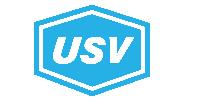





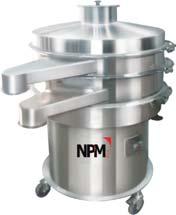






Coating,DryingandLaminatingthebasicfunctionsofthe«LTE-S»



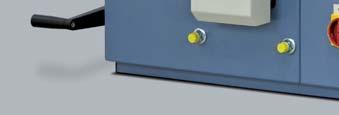








SmallLABCOATERforsamplesizeA3

Versatileusagefor
•knifeoverroll
•airknife
•rubberblanket

•lamination
Variousoptionse.g.surfacetemperaturemeasurement
Wewillshowyouhowtoachievetheoptimalperformancefromthe«LTE-S»
MarketleadersareusingMathistechnology













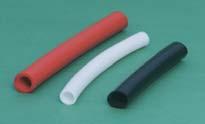
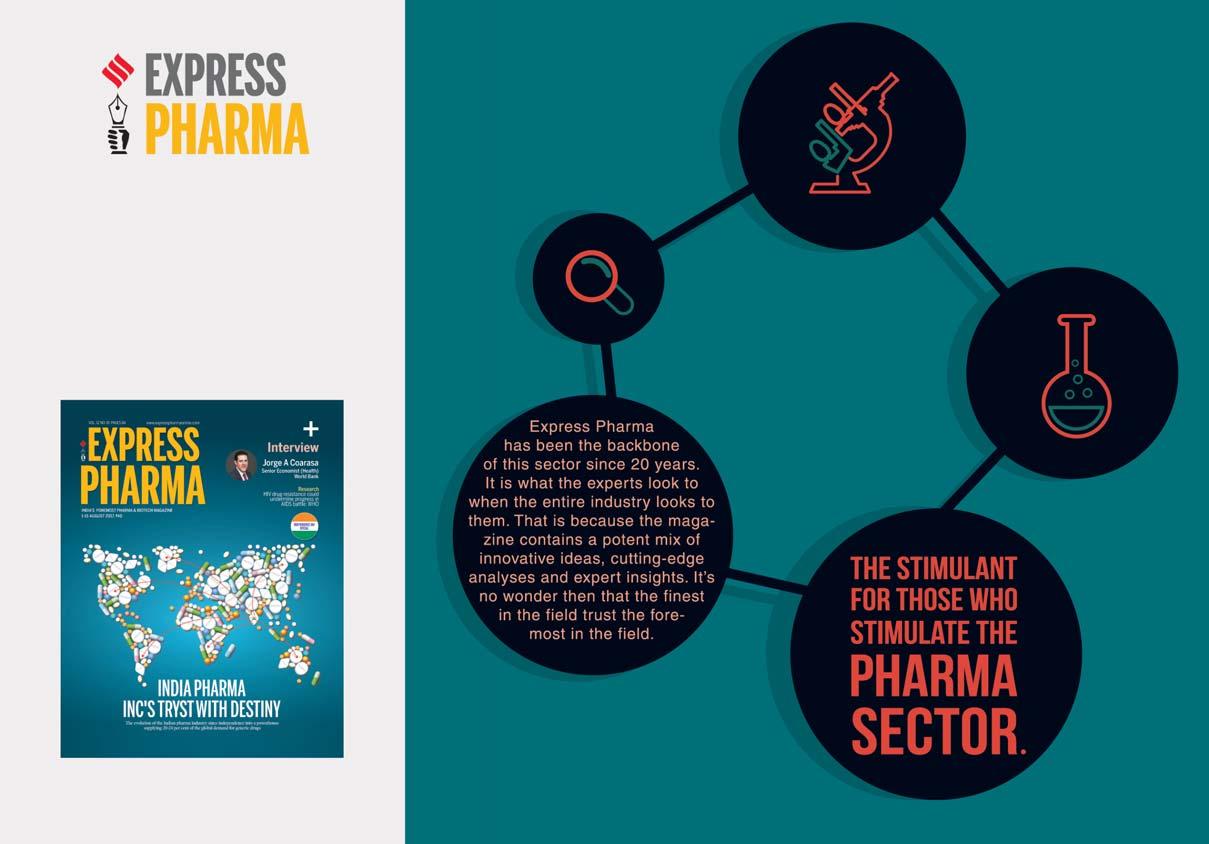

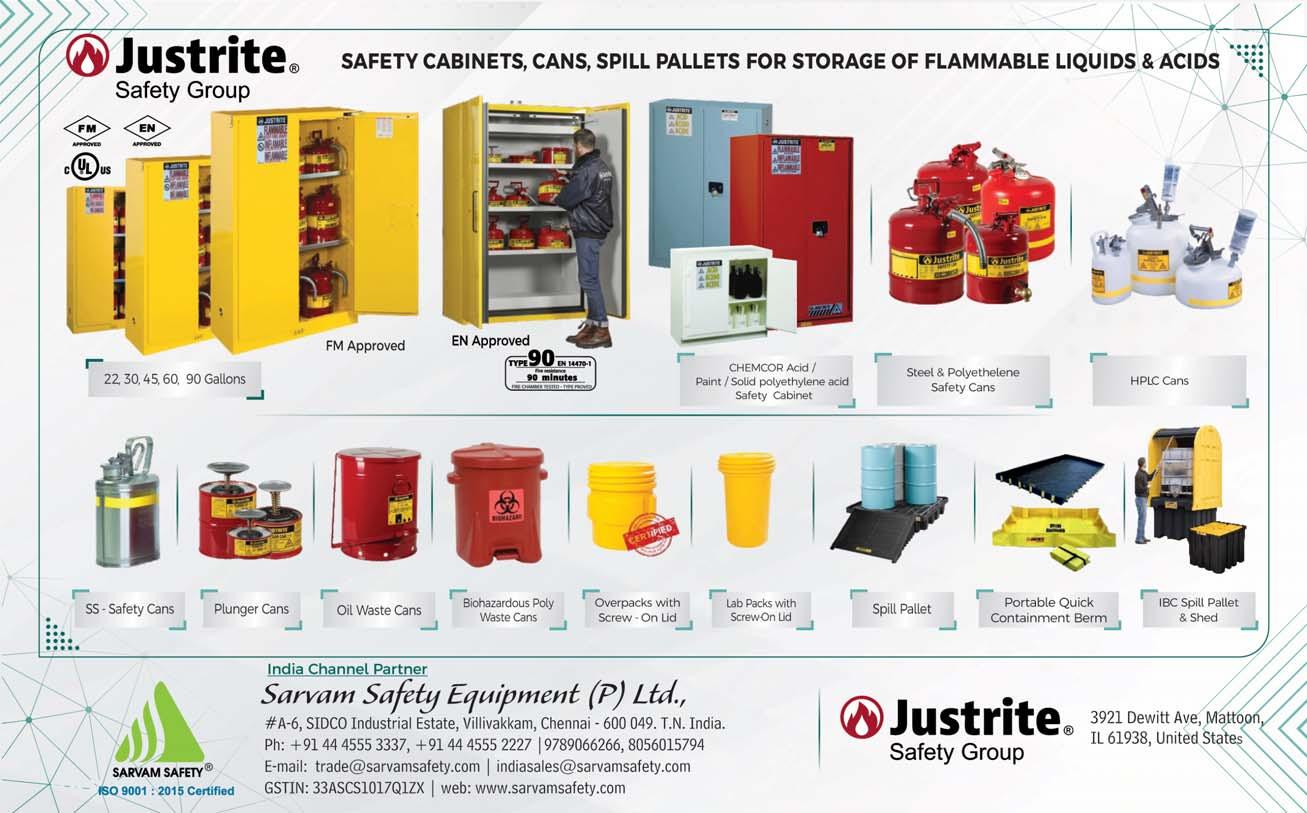












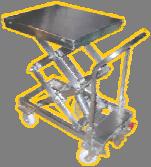



Nowavailable!
Best-in-classosmolalityperformance, designedwithyouinmind.
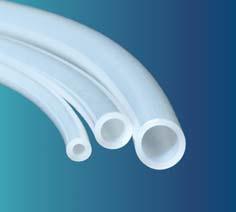

HIGHLIGHTEDFEATURES:
Offersthewidestrangeofosmolalitytesting(0–4000mOsm/kgH2O)

Supports21CFRpart11,GMPandEUAnnex11compliance
MeetsPharmacopeiaosmolalitytestingguidelines




3Leveluseraccessandpasswordprotection





Storage:unlimiteddatastorageforaccess

Audittrail:Preserveunlimitedresultsandevents
Databasebackup,protectsyourdatawithautomaticormanualbackup

No.127,BussaUdyogBhavan,TokershiJivrajRoad,SewriWest,Mumbai-400015, Maharashtra,Landline:+91022-24166630Mobile:+919833286615




























Abhijit Kulkarni ,Manager - Consulting Services,Pilz India speaks about workplace safety, evolving safety manufacturing landscape in India,the adoption of AI,MLand other technologies and their impact on manufacturing,solutions and services offered by PILZIndia and more in an interview with Express Pharma

What is the level of safety in Indian manufacturing, and how is the safety manufacturing landscape changing over the years?
Technology is rapidly evolving, and its effect is largely visible in the automation and robotics market, effectively altering how businesses operate. Over the years, we have found an increasing number of Indian organisations adopting or venturing into adopting advanced technologies such as Artificial Intelligence (AI), Machine Learning (ML), and digitalisation of operations. While exploring these nextgeneration automation solutions, achieving higher productivity, increasing efficiency, and reducing costs is the ulterior motive of organisations. Factories look at enabling real-time monitoring of production data, predictive maintenance solutions, optimising production processes, and identifying opportunities for process improvements.
However, with these advances, safety, and security have become a prime challenge for machine builders, factories, and plants. The convergence of Information Technology (IT) and Operation Technology (OT) leaves manufacturing setups vulnerable to cyberattacks. On the other hand, with increased automation, the need for machine and human safety drastically increases.
There is an enhanced thrust by plants and manufacturing units regarding safety and safeguarding techniques. As machines increasingly become complex, they demand nextgeneration automation solutions. Additionally, with higher complexity and speeds, the need for safety in these machines becomes inevitable. Usually, factories see safeguarding techniques as the beginning stage of safety. Moreover, plant and factory operators are demanding safety and security to be implemented in their line machines without hampering productivity and efficiency. The manufacturing landscape is continuously changing, with safety and security at the crux of the change.
How can factories and machine builders reduce risk when it comes to machine safety?
It is aptly said, “You can only cure something that is detected or diagnosed.” This is not only applicable in medicine but also in safety and security in machine building. If machine builders are unaware of risks and hazards, then they cannot fix them. Thus, it is essential for the machine builder to identify gaps and lacunae in his safety procedures in their machines at an early stage, helping them detect and eliminate potential safety risks for humans and machines. A
thorough risk assessment in accordance with ISO 12100 will help machine builders to define, prioritise and implement necessary safety measures.
A machine builder should also follow the entire machine safety lifecycle after he successfully assesses the risks in their machines. Understanding the gaps and not bridging them will not be wise. Thus, a machine builder needs to look at a safety concept and a safety design specifically crafted for their machines. Post the design, it is essential for the machine builder to implement the design to not only make his machine safe and comply with necessary applicable standards but also minimalise the impact on the costs and productivity. One would think that this helps the machine to be safe and secure from the identified hazards. However, safety validation is the most crucial step in the safety lifecycle that checks whether the protective measures have been implemented correctly and the safety system is fully functional. Pilz India supports machine builders throughout the entire machine safety lifecycle starting from risk assessment, safety concept, safety design, and safety implementation to safety validation. A machine builder can ensure his machine operates safely
Pilz India supports machine builders throughout the entire machine safety lifecycle starting from risk assessment,safety concept,safety design,and safety implementation to safety validation
and help in reducing risk. How would a machine builder know that their machine is safe?
After the machine is subjected to a machine safety lifecycle of risk assessment, safety concept, safety design, and safety implementation to safety validation, the machine builder is sure of having implemented the safety measures as per the applicable directives, laws, and standards. This guarantees reduced risk for the machine.
Additionally, machine builders can train their team by providing safety training to employees that helps them gain in-depth knowledge in various safety aspects.
With our safety systems, businesses can rest assured that their personnel and operations are protected from potential hazards. Our team of 13+ certified consultants includes two Certified Experts in CE Marking (CECE) and two Certified Experts in Functional Safety (CEFS) professionals who have over a decade of hands-on experience on most complex machines. Our efforts are being recognised by our global team, which has resulted in Pilz India being involved in various international projects.
With Pilz India’s International Qualification Programme IQP, machine builders can build up their knowledge gradually and continue training up to the required degree of qualification. These training courses are divided into four levels – from introduction level to expert certification. Additionally, a machine builder can also undergo training such as becoming a Certified Machinery Safety Expert (CMSE), Certified Expert in CE Marking (CECE), and Certified Expert in Functional Safety (CEFS). The training is in collaboration with TÜV NORD, with those passing the final examination post-training receiving a certificate that is issued by TÜV NORD and is recognised internationally. Thus, together with the machine safety lifecycle and internationally recognised
training by certified experts, machine builders are in safe hands with Pilz India.
We are proud of the fact that with our innovative solutions and decades of expertise, we have globally established ourselves as a complete solution provider for safety and automation technology. Moreover, the industry benefits from our comprehensive service portfolio ranging from risk assessment and safety validation to full engineering. We assist machine builders and factories with safety through the whole machine lifecycle with our services, such as risk assessment, safety concept, safety design, system implementation, and safety validation. This helps the machine builder to ensure his machines are safe.
Workplace safety has gained prominence in India. How does Pilz India help factories and manufacturing units ensure operator safety? The continuing safety of machine operators is the top priority for all manufacturing units and factories. Moreover, plant and machine operators are confronted with the challenge of taking all the necessary safety measures to ensure this safety.
Construction, upgrades, manipulation of safeguards or changes to work processes can all undermine the level of protection, which, if undetected, can cause considerable damage and compromise the safety of staff. It is essential to inspect all safeguards with regard to installation, condition, and safe function, which includes ESTOPs, safety gates, two-hand control devices, light curtains,
laser scanners, and camerabased systems.
The plant operator or manufacturing unit also needs to gain a comprehensive understanding of the overall safety and conformity status of machinery in accordance with the current legal position and applicable standards. The plant operator or manufacturing unit needs to provide their staff with effective protection from hazardous energy sources in the form of a Lockout/Tagout (LoTo) system. These measures guarantee that machines and other work equipment are isolated from the energy supply, whether electrical, mechanical, hydraulic, etc., which assures an unintended restart. As a plant operator, it is of utmost importance to get the plant assessed to understand the safety status of machinery and the plant as a whole. Pilz India supports plant operators with various safety training.
Pilz India offers you a comprehensive range of services for the standardcompliant analysis and optimisation of your safety status in the workplace. With its comprehensive solutions for the factories and manufacturing setups. Pilz India ensures greater safety in the workplace.
When machine builders export machines, they need their machines to comply with various international standards. As a technology leader in the safety market, does Pilz India offer such compliance services to machine builders, helping them with hassle-free compliance?
Manufacturers, exporters and
operators that wish to export their machines around the world are confronted with complex compliance and legal issues. These entities need to ensure that their machinery conforms to the regulatory requirements, such as CE marking in Europe, OSHA in the US, NR-12 in Brazil, KOSHA in Korea, GOST in Russia, or CCC in China.
Machinery that is imported into European Union and/or put into service in the territory needs to comply with the testing standards of CE, whether it is a new, used and modified, or expanded machinery. Similar is the situation for various other countries, and the standards vary depending on the country the machine builder is exporting to.
Machine builders need a solution provider with extensive knowledge and experience when it comes to interpreting the applicable directives and standards and actual implementation. Pilz India has been successfully supporting its customers with conformity assessment procedures for various markets and standards. Pilz India assists its customers throughout the conformity assessment.
We also provide International Machinery Safety Compliance services like CE Marking, UL, NR-12 etc. for machine builders exporting machines to the international market. Our Internationally certified trainers provide training on various topics of machine safety with their vast experience.
Could you highlight some of the service capabilities of Pilz India?
As a leading provider of safe automation technology solutions, we at Pilz India are committed to providing safe and secure automation solutions for plants and machinery. We understand the challenges faced by businesses in achieving safe, efficient, and secure plant operations. We help machine builders (OEMs), and manufacturing plants to overcome these challenges with our wide range of innovative safe automation solutions.
We are proud of the fact that with our innovative solutions and decades of expertise, we have globally established ourselves as a complete solution provider for safety and automation technology. Our objective is to automate plants, factories, and machinery with guaranteed safety of humans, machines, and the environment. Our automation solutions enable machine builders and factories to become more digital, connected, flexible, efficient, safe, and secure. Our customer-oriented, innovative, and holistic safe automation solutions in accordance with international/national standards and laws have made us extremely successful globally. We work closely with our customers to develop automation solutions that are safe and secure, meeting safety standards and industry requirements.
Safety is our core competency, and we share our know-how for the benefit of the industry by being actively involved in over 50+ standards committees worldwide. We are proud that we have shaped the course of safe automation over the past seven decades and will continue doing so for decades to come. We also keep tabs on upcoming safety standards and keep our customers informed about these changing trends. One such example is the BIS standard for industrial safety. We are part of the standard formation committee, and we are not only helping shape the future of safety in India but also contributing to aligning the standard to international norms.
Pilz India offers you a comprehensive range of services for the standard-compliant analysis and optimisation of your safety status in the workplace.With its comprehensive solutions for the factories and manufacturing setups.Pilz India ensures greater safety in the workplace
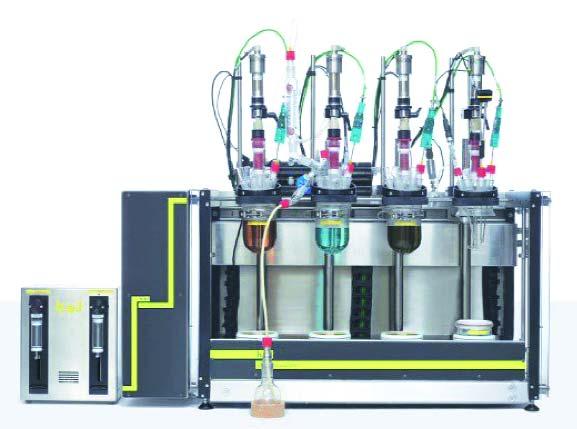
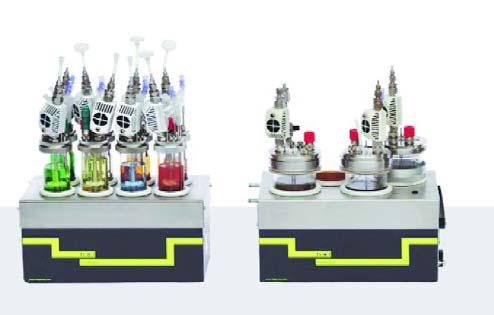
Purnima Parkhi,Lead – Application and Support,HELIndia highlights how automatic tools in the pharmaceutical laboratory from synthesis to safety enables the manufacturing chemist to run a process with fewer manual interactions,take decisions faster and subsequently increase the overall productivity of the organisation

The goal of drug synthesis is to scale up from producing milligram quantities in a laboratory to producing kilogram to ton quantities in a plant, all the while maintaining high quality and reproducibility at the lowest cost.
The increasingly stringent regulatory requirements and the global nature of the pharmaceutical business are continuously presenting new challenges to the pharmaceutical industry, resulting in increased competition and a need to produce high-quality APIs.
Typical workflow for the development of new APIs to the market is done in three departments namely Research & Development (R&D), Kilo lab/Pilot lab and commercial plant. API process development has subsequently gained more attention because of the potential to establish early control over the process at the research and development (R&D) stage by identifying and addressing problematic issues prior. Thus, a systematic and prospective approach during R&D is key to achieving a successful prospective validation and scale-up.
Synthetic organic chemists face challenges of working with a traditional round bottom flask (RBF) setup; like manual temperature and pressure settings, with a limited temperature range, no or limited automation, charting and reporting. They seek advances to help improve yield and purity ofintermediates and APIs. To synthesise an active molecule effectively, the reaction needs to be optimised. Accurate control of the
process temperature plays an important role in the consistency of the process at the R&D level. If the temperature of the process deviates, then side reactions may occur, resulting in the formation of impurities which influence the quality and yield of the final product.
At the discovery stage, including lead optimisation, parallel reactors will allow research scientists to run parallel reactions on the reactor with automatic and precise control of process parameters enabling them to focus on reaction chemistry at the lab scale.
Building a library of potential candidate lead molecules with the desired characteristics (e.g., biological activity towards a target molecule) requires a targeted parallel synthesis approach, where the ability to run multiple experiments simultaneously dramatically improves productivity. Similarly, the same approach can be applied for lead optimisation to improve efficacy or other parameters.
The term ‘Process’ in the pharmaceutical industry is applied
to the process development work that leads to the efficient, reproducible, economical, safe, and environmentally friendly synthesis of the active pharmaceutical ingredient (API) in a regulated environment.
The process optimisation stage helps to determine what will be required to scale up the molecule and turn the chemical into a drug substance that is free of impurities. It lays the groundwork for effective scale-up.
During this stage, there is a need to understand the Critical Process Parameters (CPPs), or the key variables affecting the production process. CPPs are monitored to detect changes in production operations and product output quality or
changes in critical quality attributes, such as temperature, the time it takes for a reaction, crystallisation and agitation speed and other factors.
The Parallel Reactor platforms enable multiple synthetic routes to be investigated in parallel, identifying the optimal conditions to take through to scale-up. Conversion efficiency, economic viability and potential scale-up challenges can be identified at this stage. Reaction parameters are optimised in parallel. It reduces process development time with controlled conditions for meaningful and reproducible
eted reactor before the actual scale up. The key reaction parameters such as temperature, dosing, pH and stirring must be accurately measured and controlled so that impurities and by-product formation can be minimised. And to do so, various instruments are deployed. The user must monitor and control them individually, which is prone to errors and time-consuming helps in bringing stirrers, dosing units together under a common easy to use interface. Continuous data collection and reporting will improve the ability to make informed assessments during
results, while recording data for a better understanding of reactions.
(DoE) identifying the critical parameters of a process is crucial for maximising the output (e.g., yield, purity, selectivity).
The term “Scale-Up” is used to refer to an increase in the batch size of pharma products such as intermediates and APIs, usually from the milligram to kilogram scale.
Once the reaction is optimised, it is scaled up in a jack-
scale-up.
A reaction calorimeter is designed to investigate the thermal properties of a chemical reaction under the intended operating conditions. The thermodynamic and kinetic information obtained can be used for the optimisation of process conditions for maximised conversion while minimising safety hazards. It understands the thermodynamics and kinetics of your process under isothermal or non-isothermal conditions for safe scale-up.
During scale-up, automation allows for safe design of
the manufacturing procedure, identifying possible hazards and risks.
Once the process has been optimised in Kilo lab, full scale-up safety studies need to be carried out. If the energy released during the chemical process cannot be removed immediately, the process temperature will rise. This may have serious implications on reaction kinetics and safety of the process. To avoid such incidents, understanding critical process safety parameters becomes crucial. Reaction Calorimeter provides data to enable the safe running of chemical processes and is equipped to conduct safety studies of unknown reactions so that unexpected exotherm, runaway situations and fatal accidents can be avoided.
At the manufacturing scale, automation allows for safe processes to be completed day in, day out, without any loss of productivity, quality, or system
control.
Due to the need for faster development times and efficiency, pharmaceutical industry has recognised the strate-

gic need to accelerate the development of APIs by deploying smart laboratory devices coupled with lab digitalisation capabilities. With these automatic tools in the pharmaceutical laboratory from synthesis to safety, the manufacturing chemist runs a process with fewer manual interactions, but they can also
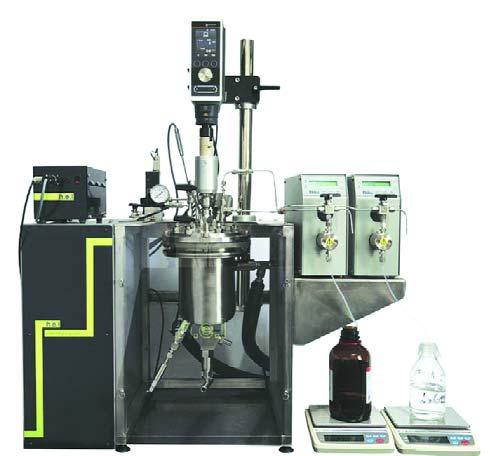
leave the system unattended. With the help of data rich experiments, scientists can take decisions faster and subsequently increase the overall productivity of the organisation.
As the power of automation increases in laboratory, so will the capability of the modern chemist.
Due to the need for faster development times and efficiency,pharmaceutical industry has recognised the strategic need to accelerate the development of APIs by deploying smart laboratory devices coupled with lab digitalisation capabilities
It enables pharma development scientists to decide which drug candidates to investigate further and develop into marketable drugs as quickly as possible
Waters Corporation launched the industry'sfirst targeted imaging mass spectrometer based on its Xevo TQ Absolute tandem quadrupole mass spectrometer, the most sensitive and compact mass spectrometer in its class. The new instrument combines the WatersDESI XS sourcewith the Xevo TQ Absolute system and is five times more sensitive and five times faster than discovery-based imaging systems at precisely determining whether a particular small molecule drug product – and how much of it - reaches its intended target, such as a brain, liver, or lung, in a test subject.
"Customers have success-
fully applied the Xevo TQ Absolute system to solve a host of problems including PFAS testing at parts-perquadrillion levels. Now, combining it with the DESI XS source gives drug development scientists a powerful new tool for efficiently evaluating the effects of drugs at the site of action with the statistical power of full studies," said Jon Pratt, Senior Vice President, Waters Division.
Dr Jephte Akakpo, Post-Doctoral Research Fellow, University of Kansas Medical Center, is part of a team researching an antidote (fomepizole) to
drug–induced acute liver and kidney damage caused by an
acetaminophen overdose.
"The DESI XS source features a high-performance sprayer and that makes the DESI source robust so we can work much more efficiently. Pairing it with the Xevo TQ Absolute system will greatly improve the signal-to-noise ratio and lets us test hypotheses in a way that we couldn't before. The system is taking quantitative MS imaging to the next level," said Dr Akakpo.
Applications for direct-from-sample DESI/tandem quadrupole mass spectrometry include:

◆ Elucidating drug distribution in tissue sections
◆ Monitoring relevant biochemical pathways in toxicological studies
◆ Classifying tissue and determining tumor margins
At this year's ASMS conference, Waters is also showcasing itsPFAS analytical workflowbased on the ultra-sensitive Xevo TQ Absolute mass spectrometer, chemistries, and software. The end-to-end UPLC-MS workflow allows laboratories worldwide to upgrade their capability and keep current with the latest regulatory requirements for measuring parts-perquadrillion levels of PFAS in air, water, soil, and food.
Integration of Sartorius' process scale multi-column chromatography with Waters' process analytical technology will provide robust analytical data for downstream biomanufacturing of mAbs,recombinant proteins,vaccines,and other biologics
Waters Corporation
and Sartorius announced a new collaboration to develop integrated analytical solutions for downstream biomanufacturing, expanding theirjoint agreementthat began with upstream bioprocessing analytics.
Software and hardware integrations between the Waters PATROL Ultra Performance Liquid Chromatography (UPLC) Process Analysis Systemand theSartorius ResoluteBioSMB multi-column chromatography platformwill give bioprocess engineers ac-
cess to more comprehensive analytical data for downstream batch andcontinuous manufacturing, improving yields while reducing waste and driving down biomanufacturing costs.
"From the beginning of our collaboration with Sartorius, we've strived to give bioprocess engineers faster and more direct access to critical quality attribute information about their drug products in the name of improving production yields and getting drugs to patients faster. Based on the positive response of customers to our collaborative efforts with upstream
bioprocessing analytics, we see tremendous benefit to combining the PATROL Process Analysis System and the Sartorius BioSMB to bring timely pointof-decision analytics to downstream biomanufacturing for monoclonal antibodies, recombinant proteins, vaccines and AAV gene therapies," said Jon Pratt, Senior Vice President, Waters Division.
"Now that intensified, continuous manufacturing of biologics is becoming a reality, there is a greater need for realtime analytical measurement. The value of combining tech-
nologies from Sartorius and Waters lies in bringing fundamentally important analytics to the point where it is needed and giving bioprocess engineers a more complete understanding of their downstream manufacturing processing and its effects on drug product quality. We believe this can have significant impacts on drug production costs by helping to increase yields and reduce waste," said René Fáber, Head of Bioprocess Solutions Division, Sartorius. In-process sampling and the analysis of biological drugs sent to a central laboratory can take
weeks before the results of necessary quality checks are in. Waters and Sartorius have shown how bioprocess scientists can streamline these analytics, so that product quality tests for protein A, aggregation and charge variants occur closer to the process, potentially saving weeks of production time. This has a positive impact on total process yield and product quality because the individual downstream unit operation can be further optimised much more easily and corrective actions can be taken much faster.
Asector like pharmaceuticals which is, governed by strict norms and regulations must operate with utmost efficiency. Testo provides the best-in-class solution for comprehensive data monitoring and management for equipment as well as environmental parameters in the pharma industry called the testo Saveris Pharma.It is an automated system that is integrated into the facility and constitutes of wireless or Ethernet probes installed at different locations that are connected to one base station to document and monitor all measurement data of its own. The monitoring process is uninterrupted, and the system provides several alarm options in case the measurement values violate the defined limit values.
Some advantages of testo Saveris Pharma for environmentand equipment monitoring systemsinclude:
◆ A holistic system comprising sensors, software, and services
◆ In accordance with 21 CFR Part 11 and GAMP compliance
◆ Provides seamless recording, automated tamper-proof documentation
◆ Secure triple-layer storage of the measurement data of all audit-relevant parameters
◆ The data is stored in the probes, so even if software connectivity is lost the data is safe and can be downloaded once the software is logged in
◆ Real-time alarm facility to highlight unexpected results
Testo Saveris Pharma system consists of testo Saveris base V 3.0 which is the core component of the system. It manages and evaluates data from all over the facility from 3000 channels. The four testo 150 data logger modules can

be flexibly combined with the three communication modules (WLAN, LAN, testo UltraRange) making it a very convenient and user-friendly system along with the webbased, intuitive cockpit to detect alarms, initiate corrective measures and acknowledge them whenever necessary.
Manufacturing/ Production area | Research and QC labs | Cleanrooms and data centres | Warehouses and packaging | Deep freezers, refrigerators, cold rooms | Incubators, Stability test and walk-in cham-


bers | Blood and tissue banks | Autoclaves and nitrogen tanks | Sterilizers and many more. Testo's specially trained service team supports the customer throughout the process in a very systematic way – from planning, documentation, system qualification and software validation to service and support. Testo also has a NABL-accredited service and calibration LAB that takes care of the aftersales support locally from Pune.
For more details, login to www.testo.comor write to info@testo.in
Testo Saveris Pharma system consists of testo Saveris base V 3.0 which is the core component of the system.It manages and evaluates data from all over the facility from 3000 channels
The company offers complete logistics solutions by providing dock levelers,dock shelters, sectional overhead doors and dock houses
Gandhi AutomationsIndia's No.1 Entrance Automation and Loading Bay Equipment Company.
This widely recognised position has been achieved over years of hard work, innovation, commitment to quality and reliable customer service. The company is also proud to be certified to ISO 9001 : 2015, ISO 14001 : 2015 and ISO 45001 : 2018. Since its inception in 1996 we have been manufacturing, importing, distributing and installing products that are problem free and easy to operate.
The company offers complete logistics solutions by providing dock levelers, dock shelters, sectional overhead doors and dock houses.
Electro-hydraulic Dock Levelers offered by Gandhi Automations are not only “a bridge for connecting a vehicle”, but also facilitate fast, smooth and safe transition by compensating the difference in heights between the loading bay and the vehicle. This contributes to minimising energy used and savings on heating and chilling costs resulting in maintaining the quality of the transported goods. Dock Levelers offered by Gandhi Automations are designed as per EN 1398 standard for the most demanding loading and unloading operations.
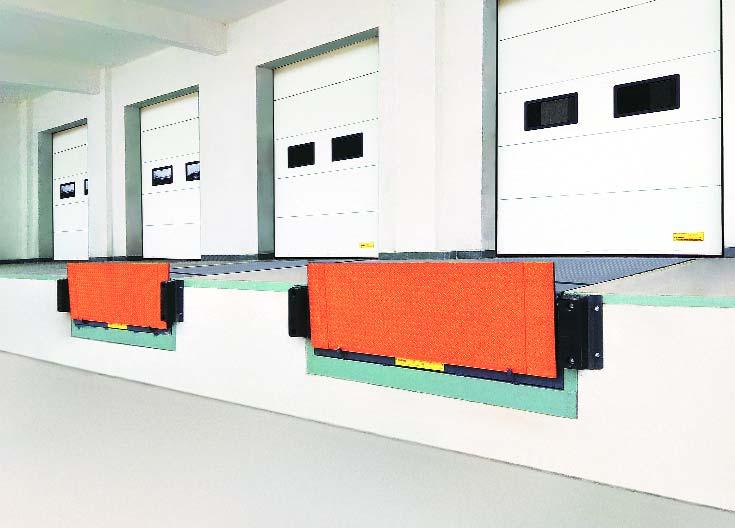
The importance of efficient loading the goods has always been evident, and it has increased over the years, essentially for two reasons: the lesser availability and the higher cost of manpower. Consequently lesser qualified manpower is being utilised which leads to damage to the goods.
The cost of loading and unloading the goods can be calculated precisely and is exactly definable, which allows for a scientific approach to find out
the investment that goes into the process. Gandhi Automations has always designed solutions based on such scientific approach and feedback from clients. The Dock Levelers offered by the company ensure loading and unloading with lesser effort and minimal cost.
It is possible to load and unload your products in a safe way and in the process, obtain remarkable energy savings.

The Dock Leveler remains with the Loading Bay in rest position and the Sectional Overhead Door closed, until the vehicle is positioned. The driver drives back centring to the Dock Shelter and stops the vehicle the moment it gets in contact with the bumpers.
The Sectional Overhead Door is then opened only when the vehicle is positioned, brakes are applied and engine
is shut off .This eliminates the exit of hot air, intake of cold air (or the opposite in hot area and inside conditioned places) and intake of exhausting gases in the warehouse. After the Sectional Overhead Door opens, the lip of the Dock Leveler connects to the truck bed for loading/unloading to take place. At the end of the loading/unloading the Dock Leveler is put in rest position and the Sectional Overhead Door is closed, without moving the vehicle. The vehicle then departs at the end of the process. Following are the two types of Dock Levelers:
a) Radius Lip Dock Levelers: Radius Lip Dock Levelers are available in multiple size and capacities. It allows the dock to connect with the truck bed, thus making it convenient to drive directly on and off with
forklift trucks etc also the SelfCleaning Lip - Hinge System does not retain dust and dirt which allows a smooth operation.
b) Telescopic Lip Dock Levelers: Telescopic Lip Dock Levelers are ideal for connecting vehicles unable to drive near dock i.e. sea containers, side loading railway wagons etc. These Dock Levelers can be supplied with a lip extending up to 1 m.

c) Edge-of-Dock Levelers: Edge-of-Dock Leveler is developed in compliance with the latest European safety standard, EN 1398. It has a capacity of 6000kg and is suitable for use with all types of material handling equipments.
d) Forklift Roll-Off Barrier Lip Dock Levelers: The newly introduced product Forklift Roll-Off Barrier Lip Dock Lev-
eler add a run-off protection which prevents accidental forklift roll-off when the Ovehead door is open and no trailer is stationed at the dock. These dock levelers are designed and built to provide all the benefits of the hydraulic dock leveler along with the additional benefit of providing a formidable barrier.
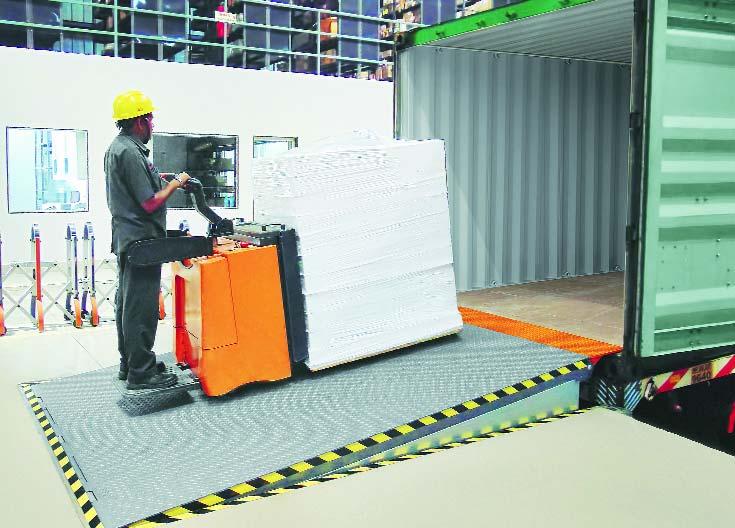
Gandhi Automation’s Dock Levelers are equipped with the most secure safety devices and accessories.
Contact
Gandhi Automations Chawda Commercial Centre Link Road, Malad (W) Mumbai – 400064, India
Off : +91 22 66720200 / 66720300
Fax: +91 22 66720201
Email: sales@geapl.co.in
Website: www.geapl.co.in






